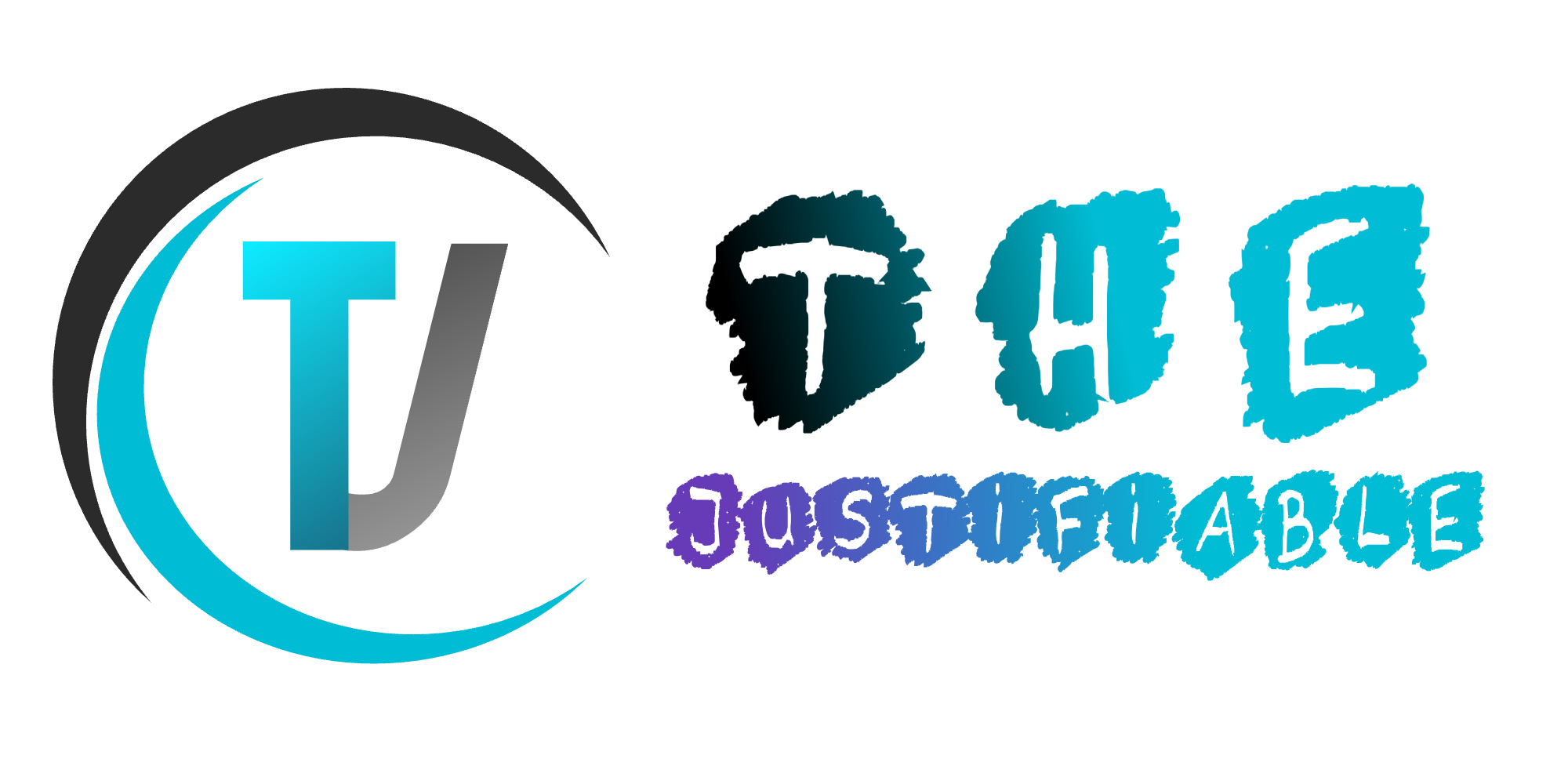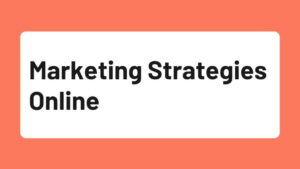Table of Contents
Looking for 5 ways to make money that can actually change your life—not just cover a few extra bills? You’re not alone. What if you could quit your 9-to-5, earn while you sleep, or turn a passion into a thriving income stream?
In this guide, you’ll discover real, proven strategies that go far beyond typical side hustle advice. How do people turn skills into six-figure freelance businesses? Can you really make passive income from affiliate links or digital products? What’s working right now in ecommerce and coaching that anyone can start?
Let me walk you through five powerful money-making paths that have helped people ditch burnout and build financial freedom—without needing a huge budget or tons of experience.
1. Launch A High-Profit Freelance Service Online
Freelancing can go from side gig to full-time income when you approach it strategically. Whether you’re a designer, writer, video editor, or virtual assistant, the key is to build a service that solves real problems—and makes clients eager to pay you for it.
Identify Profitable Skills That Are Always in Demand
The first step is figuring out which of your skills people are already paying for—and not just once, but again and again. You don’t need to guess. Instead, look for signals like high job volume, client budgets, and repeat projects.
Here are a few consistently profitable freelance niches:
- Copywriting and content writing for SEO, blogs, and emails
- Graphic design for social media, branding, and ads
- Video editing for YouTube creators and marketers
- Web development for e-commerce stores and startups
- Virtual assistance for scheduling, outreach, and inbox management
A quick search on platforms like Upwork or Fiverr will show you thousands of listings in these categories. Pay close attention to profiles charging $75–$150/hour and how they position their services. This will help you reverse-engineer your own offer.
Pro Tip: Combine a hard skill (like editing) with a niche (like fitness coaches). It instantly makes you more valuable and easier to refer.
Build a Portfolio Without Experience Using Free Work Tactics
When you’re just starting out, your biggest asset isn’t your resume—it’s your proof of skill. But how do you show what you can do when no one’s hired you yet?
Let me break it down for you with a few simple tactics:
- Offer to work for one or two dream clients for free, in exchange for a testimonial or case study
- Create your own mini-projects—like redesigning a website or rewriting an article—and publish them in a Notion page, Google Doc, or one-page site
- Reach out to nonprofits or startups who can benefit from your work and offer a free trial
Don’t do more than 1–2 of these. The point is to demonstrate results, not get stuck doing free work forever. One solid case study is often enough to land your first few paid gigs.
Expert Insight: According to a report by Freelancer Map, over 60% of new freelancers say their first job came from work they showcased—even if it wasn’t paid.
Use Freelance Marketplaces to Land High-Paying Clients
Marketplaces are like training wheels. They help you land initial projects, learn client communication, and build confidence.
Top freelance platforms that still work in 2025:
- Upwork – Ideal for mid to high-end clients; requires a strong profile and proposals
- Toptal – For developers, designers, and finance experts who pass its screening process
- Contra – Great for creatives and Gen Z freelancers looking for portfolio-style profiles
- Fiverr Pro – Skip the $5 crowd by applying for Pro and setting premium pricing
Write proposals that focus on outcomes, not services. Instead of saying “I’m a web designer,” say “I help coaches launch stunning websites that convert leads into paying clients.”
And if a platform lets you showcase projects, fill it up. Don’t leave it half-baked—your profile is your storefront.
Scale From One-Off Projects to Retainer Income
One-off projects help you build momentum. But to create financial stability, you need recurring work.
Here’s how to transition:
- After a successful project, offer an ongoing service—like monthly blog posts, site maintenance, or email campaigns
- Productize your offer into a fixed monthly package (e.g., 4 blog posts per month, $1,200)
- Use a client onboarding doc to set expectations and lock in long-term agreements
This shift doesn’t just make your income more predictable. It also reduces time spent on finding new clients. One retainer can be worth five one-off projects.
In my experience, retainer clients tend to stick around 3–6 months minimum—sometimes years.
Set Your Own Rates and Create Predictable Monthly Cash Flow
Pricing is where most freelancers get stuck. You either undercharge because you’re new or overthink every quote. Let me simplify it.
Here’s a basic pricing path:
- Hourly when you’re starting: $30–$60 for beginners, $75–$150 for skilled freelancers
- Project-based once you know how long things take: $500 blog package, $1,000 design
- Monthly retainers once you prove value: $1,200–$3,000+ per client
To set your monthly income goal, reverse-engineer from what you want to earn:
- Want $5,000/month?
- That’s just 3 retainer clients at $1,700 or 5 at $1,000.
Track your invoices and send them on the same date each month. Use tools like Bonsai, or Wave to automate reminders and recurring payments.
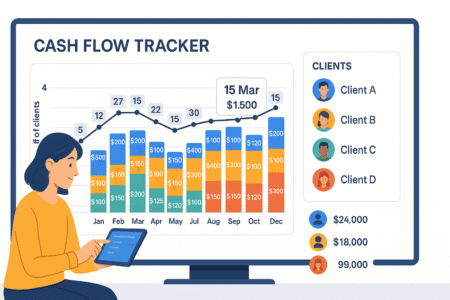
This helps reduce income anxiety and makes freelancing feel like a real, sustainable business.
2. Build A Passive Income Stream With Affiliate Marketing
Affiliate marketing is one of the most scalable ways to earn income online—even while you sleep. The idea is simple: promote products you trust, and get paid every time someone buys through your unique link.
Choose Evergreen Niches With Consistent Buyer Intent
Success starts with choosing the right niche. You want something that people are always searching for and willing to spend money on.
Here are a few proven evergreen niches:
- Health and wellness (fitness programs, supplements, sleep aids)
- Personal finance (investing apps, budgeting tools, credit repair)
- Online education (courses, digital learning platforms, certification programs)
- Tech and tools (software, productivity apps, website hosting)
- Parenting and lifestyle (baby gear, home organization, mental wellness)
The key is buyer intent—look for products people need, not just want. A weight-loss program, for instance, speaks to urgency. So does a time-saving app for busy professionals.
A niche doesn’t need to be ultra-specific at the start, but focusing on a problem and a clear transformation helps build trust faster.
Find High-Converting Products With Recurring Commissions
Not all affiliate products are equal. Some pay once. Some pay monthly. And some don’t convert at all.
Look for affiliate programs that offer:
- Recurring commissions (monthly software tools like ConvertKit or Teachable)
- High one-time payouts ($100+ per sale, like with Bluehost or ActiveCampaign)
- Cookie durations of 30+ days (so you still get credit if someone buys later)
- Reliable tracking and transparent dashboards
Affiliate networks worth exploring:
- Flexoffers – Ideal for established brands and premium offers
- PartnerStack – Great for B2B SaaS with monthly commissions
- Awin – A wide variety of niches with easy search tools
- MyLead – Digital products with high margins and aggressive sales pages
Once you pick your products, test them yourself—or find real user reviews and case studies—to make sure they deliver real value.
Expert Insight: A study by Authority Hacker showed that affiliate marketers promoting recurring products earned 30% more on average than those focused on one-time payouts.
Create Content That Ranks and Sells Without Paid Ads
Affiliate income thrives when your content works for you long after it’s published. That’s where SEO comes in.
Start with content that solves specific problems. A few examples:
- “Best budget planners for new moms”
- “How to choose a web host for a blog”
- “Top productivity apps for ADHD professionals”
Each of those naturally leads into an affiliate product.
Focus on:
- Search intent (what are people really looking for?)
- Helpful, comparison-style content (tables, pros/cons, use cases)
- Internal linking to other relevant content
- Calls to action (like “Try this tool free for 14 days”)
A simple blog post can generate passive income for years if it ranks on Google. You don’t need a huge site—just a few strong pages that hit the mark.
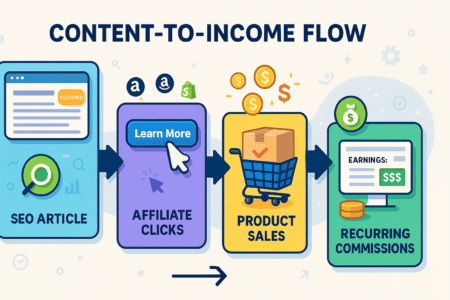
Turn Social Media Into a 24/7 Affiliate Funnel
You don’t need a huge audience to succeed on social. What you need is a smart content system.
Try this approach:
- Post 3–4 times a week around problems your niche audience faces
- Create short reels or TikToks that show how your product solves that issue
- Use a link-in-bio tool (like Beacons or Linktree) with direct affiliate links
- Share testimonials and real results (yours or others’)
Instagram, Pinterest, TikTok, and even LinkedIn can be strong traffic sources depending on your niche. The key is consistency and not sounding like a sales robot.
Social platforms work best when you show value first and offer products second.
Tip: Record your screen while using the tool you’re promoting. Show people how it works, not just what it is.
Track Results and Optimize for Long-Term Scalability
Once you start getting clicks and sales, don’t leave it to guesswork. Use affiliate dashboards, tracking links, and analytics tools to understand what’s working.
Track:
- Which blog posts or videos convert best
- What traffic source brings the most buyers
- Which products get clicks but no sales (to replace or fix messaging)
Tools like Pretty Links, ThirstyAffiliates, and Google Analytics make this easier. Most affiliate programs also show data like clicks, conversions, and average order value.
Use that data to:
- Double down on what’s working
- Remove low-converting links
- Update older content with fresher offers
Over time, this turns a few links into a dependable income stream that grows with minimal extra effort.
3. Create And Sell Digital Products That Deliver Real Value
Creating your own digital product can be the most empowering way to earn money online. Unlike services, you’re not trading time for dollars—and the income potential has no cap.
Validate Product Ideas With Zero Audience
You don’t need 10,000 followers to launch a product. What you need is proof that someone wants what you’re building.
Here’s how to validate your idea fast:
- Ask in communities (Reddit, Facebook groups, Quora) about a specific struggle and see what people say
- Create a landing page with a waitlist or email signup—see if people join
- Pre-sell your product at a discounted rate and deliver it later
Focus on solving small, frustrating problems. A mini-course on how to organize Google Drive folders can sell just as well as a full-blown productivity system—if it’s targeted.
Example: A freelancer created a Notion template for tracking client projects. They made $3,500 in 3 weeks just by sharing it on Twitter.
Use AI and Templates to Speed Up Product Creation
You don’t have to start from scratch. AI and template tools make it much easier to build high-quality digital products quickly.
Here’s a simple tech stack:
- ChatGPT or Jasper – For drafting course outlines, workbooks, or guides
- Canva – For designing PDFs, templates, or digital planners
- Tella or Loom – To record screen-share tutorials or slide-based lessons
- Notion – To build living documents and sell access to them
Focus on delivering real transformation. Even a 5-page guide that helps someone hit a specific goal is more valuable than a 40-page PDF with vague advice.
Sell on Gumroad, Etsy, or Your Own Website
You don’t need to be tech-savvy to sell. Here’s where to list your product:
- Gumroad – Easy to use, supports pay-what-you-want pricing, great for creators
- Etsy – Excellent for planners, spreadsheets, or printables with a lifestyle angle
- Podia or Payhip – For hosting courses, bundles, and digital downloads
- Shopify – Best if you’re also selling physical products
Add real product previews, use testimonials or reviews if available, and keep the checkout process simple.
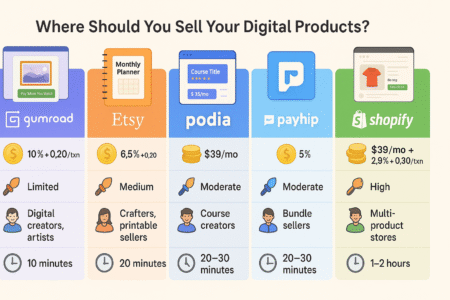
Set Up Automated Sales Funnels and Upsells
Automation keeps income flowing while you sleep. That’s the beauty of digital products.
A simple funnel might look like:
- Free lead magnet (checklist or email series)
- Email follow-up sequence that builds trust
- Sales page with one clear product offer
- Order bump or upsell for a premium version
Use tools like Aweber or MailerLite to set this up. You can also use ThriveCart for a full funnel system.
Upsells can add 30–50% more revenue without much extra effort.
Turn Customer Feedback Into Future Product Ideas
Once people start buying, don’t just move on to the next thing. Ask questions.
- What part did they love?
- Where did they get stuck?
- What would they pay more for?
Use their answers to create a follow-up product, bundle offer, or advanced version.
This cycle of feedback and iteration makes your product library stronger over time—and keeps your audience engaged.
Expert Tip: I recommend sending a short feedback survey after every sale. Tools like Typeform or Tally work great and can be embedded into your product delivery page.
4. Launch A Low-Overhead Ecommerce Business From Home
Starting an ecommerce business doesn’t have to mean warehousing inventory or spending thousands upfront. With the right model and tools, you can build a profitable store from home and keep overhead low.
Choose a Print-on-Demand or Dropshipping Model
Both print-on-demand and dropshipping let you sell physical products without handling inventory, shipping, or manufacturing. You only pay for products after you make a sale.
Print-on-Demand (POD):
- Design custom products (t-shirts, mugs, tote bags)
- A supplier prints and ships them when someone orders
- Great for artists, niche brands, or creators with a message
Dropshipping:
- Sell trending products from suppliers (via platforms like Appscenic)
- Suppliers fulfill the order while you handle branding and customer experience
- Ideal for general or seasonal products with fast testing cycles
The main difference is branding. POD gives you more control over design. Dropshipping works faster for market testing but often has slower shipping unless you find local suppliers.
Case Study: An Etsy shop owner used Printify to sell astrology-themed mugs and made $10K in 4 months—all from their living room using Canva designs.
Find Viral Products Using Real-Time Marketplaces
Finding the right product makes or breaks your store. You don’t need to invent anything new—just find what’s already catching attention and offer a better experience.
Here’s where to look:
- TikTok Creative Center – See what products are trending in video ads
- Amazon Movers & Shakers – Updated hourly with fast-growing categories
- Ecomhunt – Curated list of viral products with supplier info
- Pinterest Trends – Identify what people are saving and searching
Look for:
- Emotional or practical appeal
- Visual appeal for short videos
- Clear use-case or transformation
- Low competition with decent demand
Pro Tip: Use Google Trends to cross-check interest. A steady rise in searches is a green light for niche potential.
Build a Shopify Store With Conversion in Mind
Your store isn’t just a catalog—it’s a sales tool. Every element should guide the visitor to click “Buy.”
Here’s a simple structure to follow:
- Homepage: Clear message, trust indicators, best-selling products
- Product Page: Quality images, customer reviews, benefit-focused copy, scarcity elements
- About Page: Human story, brand purpose, photo of you or your team
- Checkout Flow: Simple, distraction-free, mobile-optimized
Use apps like:
- ReConvert – For thank you page upsells
- Loox – For photo reviews
- Shopify Email – To recover carts and send offers
Keep your design clean. One font. One or two brand colors. And don’t make people dig to find product info.
Expert Insight: Shopify reports that stores with customer testimonials and photo reviews increase conversion rates by up to 91%.
Automate Fulfillment and Focus on Marketing
Once your store is set up, your main job is visibility and customer experience—not packing boxes.
Automation tools to streamline fulfillment:
- Printful or Printify for print-on-demand
- DSers (for AliExpress dropshipping)
- Spocket for U.S. and EU supplier dropshipping
- Shopify Flow (built-in automation for Pro plan users)
This frees up your time to focus on marketing, content, and growing your brand.
Don’t forget to set up:
- Automated welcome emails
- Abandoned cart recovery
- Post-purchase thank-you flows
Use analytics tools like Shopify’s dashboard or Google Analytics to monitor where customers drop off and optimize those steps.
Use TikTok and Instagram Reels for Free Exposure
Short-form video is the new front door of ecommerce. You don’t need pro gear—just a phone, product in hand, and a few smart hooks.
Video content ideas:
- Unboxings or first impressions
- Behind-the-scenes (packaging or how it works)
- “How to use” demos
- Emotional before/after or transformation stories
Hook ideas to start your video:
- “I found this weird product on TikTok…”
- “Here’s how I stopped wasting money with this $15 solution”
- “I can’t believe this actually worked…”
Keep it under 30 seconds. Add trending audio. And don’t forget your call to action in the caption (link in bio, use code, swipe up).
Case Study: A small business selling posture correctors posted one viral TikTok and saw $6,000 in sales in 72 hours—without spending a cent on ads.
5. Turn Your Knowledge Into A Coaching or Consulting Brand
If you’ve solved a specific problem or helped people achieve results, you already have what it takes to start a coaching or consulting business. It’s one of the most direct and impactful ways to help others—and earn from your expertise.
Define a Transformation You Can Help People Achieve
People don’t pay for information—they pay for transformation. So, start by getting crystal clear on the outcome you deliver.
Ask yourself:
- Who are you helping?
- What problem are they stuck in?
- Where will they be after working with you?
Examples:
- “I help new freelancers land their first 3 clients in 30 days”
- “I help busy moms meal prep a week’s worth of food in 90 minutes”
- “I help creators build their first digital product and sell it”
Clarity here drives everything—your offer, messaging, and even your pricing.
Expert Insight: According to Thinkific’s coaching report, offers with a defined transformation convert 2–3x more than those offering general advice.
Package Your Process Into Premium Offers
Once you know the result you deliver, create a step-by-step process to get people there. This becomes your “framework.”
Structure your offer like:
- Duration (4 weeks, 3 months, etc.)
- Format (Zoom calls, Voxer access, pre-recorded lessons)
- Support (worksheets, templates, feedback, 1:1 sessions)
Price based on outcome, not hours. If you save someone 6 months of trial and error, it’s worth more than a few $100 sessions.
You don’t need dozens of clients. Just 3–5 premium ones a month can match (or exceed) your full-time income.
Use Content and Referrals to Book Sales Calls
You don’t need a big audience, but you do need a clear message and presence.
Ways to attract your first few clients:
- Post 2–3 times weekly on LinkedIn, Instagram, or Twitter sharing value and stories
- Host a free webinar or workshop
- Create a lead magnet and email sequence that invites people to book a call
Ask for referrals from your network. Let people know who you help and how. Sometimes a warm intro is all you need.
Use Calendly to book calls automatically and reduce back-and-forth emails.
Close Clients Without Feeling Salesy
Sales conversations don’t have to feel pushy. Think of them as coaching before coaching.
Structure your call like:
- Learn about their goals and struggles
- Reflect back what you heard
- Share how your process would help
- Invite them to decide if it feels right
No pressure. No sleazy tactics. Just clarity.
You’ll often hear “this is the first time I’ve felt understood”—and that builds trust.
Pro Tip: Use call frameworks like “The Clarity Call” or “Breakthrough Session” to shift the tone from selling to serving.
Transition Into Group Coaching or Scalable Programs
Once you’ve worked with a few clients 1:1, you’ll start noticing patterns. That’s when it’s time to package your process into a group program or digital course.
Benefits:
- More people helped at once
- Predictable income from launches
- Less 1:1 scheduling strain
Platforms like Circle, Skool, or Kajabi make it easy to run group coaching with built-in communities, live sessions, and content access.
Keep it simple. Start with a 4–6 week live program. Refine based on feedback, then scale into a self-paced version later.
Case Study: A productivity coach turned her 1:1 system into a 6-week cohort that filled 20 spots at $600 each—earning $12K from her first launch.

